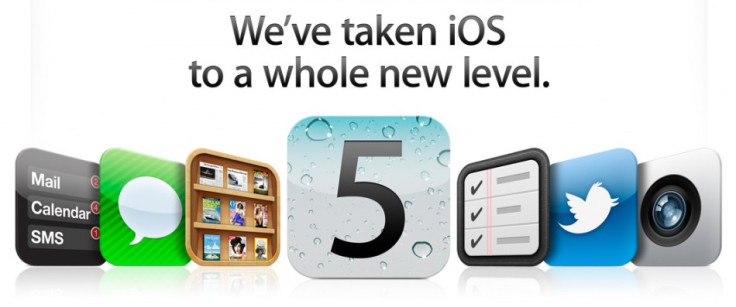iOS 5.1 Vs Ice Cream Sandwich: How do They Stack Up?

Google and Apple have extended their war to beyond their respective hardware platforms, with the advent of their newest operating systems - Android 4.0 (Ice Cream Sandwich) and iOS 5.1.
The former has been noted as the benchmark, with its cloud storage capabilities and has hogged the limelight ever since its release in October 2011. However, due to its huge hardware requirements, the ICS failed to penetrate the smartphone market and became the standard only for high-end smartphones.
On the other hand, iOS 5 has gone from strength to strength, riding on the success of the iPhone 4S. However, a few niggling issues like battery-life bugs and dropping voice levels with outgoing calls hampered user experience. All those issues have reportedly been addressed with the newest update - iOS 5.1 - paving the way for some serious competition against its Android rival - Google's Ice Cream Sandwich.
Here is the comparison of the two leading mobile OSes...
Google Cloud Vs iCloud
Both softwares allow online data storage through cloud services. The iCloud from Apple is a late entry into the market, while Google is an older player. However, the former is better integrated into its software and based on a synchronisation function that allows multiple devices to share downloaded data over iCloud.
For instance, a file that is downloaded once is automatically copied to other devices connected to that cloud service account. This resulted in an issue with Photo Stream, wherein users were unable to delete photos from their devices after uploading them online over iCloud. Now, however, users can go back and delete unwanted photos, courtesy iOS 5.1 bug fixes.
Google Cloud follows an open-ended approach, allowing multiple apps to use cloud services for different purposes such as Google Music, Google Docs, Google+ and others. On the other hand, in the iOS 5.1 everything is managed and controlled within iCloud. Google Cloud offers greater flexibility and customisation, while iOS 5.1 delivers on simplicity and usability while keeping customisation to a bare minimum.
Face Detection
iOS 5.1 now incorporates a Face Recognition feature, wherein the camera can identify the faces and highlight them while taking snapshots. In contrast, Ice Cream Sandwich goes a step further, with the revolutionary Face Unlock feature that enables the user to unlock the phone simply by staring into the handset. It is a handy security feature in instances where the user's hands are busy with other more important tasks. The user should however be wary that anyone can fool the OS by flashing a photograph of the authorised user.
Web Browsing Experience
The internet browser in the iOS 5.1 has not seen any major improvement since the birth of the iOS. This new update, however, has brought both optimization and content flexibility to the HTML5 format. Meanwhile, the Android browser has overtaken both Opera Mini and Opera Mobile to be reportedly considered the best mobile browser in the world for sheer performance and abundance of features.
The Android browser's key features include the ability to open up to 16 tabs at once, to sync with the desktop or the laptop and Chrome bookmarks, besides supporting an option to save complete web pages for offline reading. Furthermore, there is also an option to access the desktop version of the Web site, should the mobile version be inaccessible. The software now provides the expected Flash support, with Flash Player 11.1 having been released in December.
Camera Lock Screen Slider
iOS 5.1 now borrows the Lock Screen Slider with a camera button feature from the likes of Android phones such as the Galaxy Nexus running on the Ice Cream Sandwich.
Voice Assistant Software
No doubt Android ports a solid voice assistant in Android Voice Actions but it cannot beat Siri when it comes to ease of use and functionality. Android's Voice Actions responds faster but require the user to press send while sending a text message. On the other hand, Siri is a bit slow but you can send messages without having to look back at the phone or press a confirmation key. Android's Ice Cream Sandwich takes credit for its speed, while its Apple counterpart provides ease of usability.
Multitasking Capability
Multitasking in Android is enhanced by the "Recent" Apps button that comes in handy if there are a number of others running in the background and you are looking to switch apps. This feature displays thumbnails of open apps in a vertical stack for easy scrolling. Finally, you can simply swipe an app off the screen to close it. This is a much simpler approach than the iPhone's iOS, which forces you to double tap the home button and then press and hold an app icon before closing it. When it comes to multitasking, Ice Cream Sandwich is definitely the better bet.
Verdict - Which one should you Get?
There is no clear winner in terms of usability as seen across various feature sections. The two softwares seem to complement each other rather well.
The iOS is perhaps easier to operate for novice users who do not want to experiment with third-party add-ons and features. Those using jailbreaks will however break the barrier between closed and open-ended systems - iOS and Android respectively.
Android's Ice Cream Sandwich is made, by default, for geeks and advanced users who love modding the looks of their system and experiment with third-party apps/add-ons.
So, if you want ease of use you should stick to iOS 5.1, else for better flexibility and customisation we recommend the Ice cream Sandwich.
MUST READ: Android 4.0 Ice Cream Sandwich: Top Ten Reasons to Upgrade
MUST READ: Apple iOS 5.1: Top Ten Reasons to Upgrade
© Copyright IBTimes 2025. All rights reserved.






















